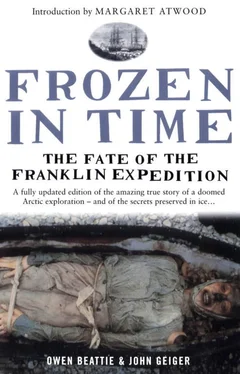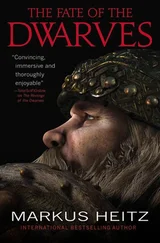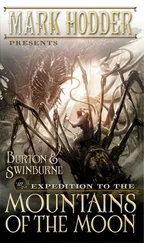In the end, the impetus for continuing to probe the Franklin disaster came not so much from the British but from two colourful Americans, who were without any Arctic experience when they each began their separate searches.
Charles Francis Hall.
Charles Francis Hall, a Cincinnati, Ohio, businessman who became interested in the Arctic following the disappearance of Franklin’s expedition, decided in 1859 to conduct a search of his own. Hall argued before potential backers that Franklin survivors might still be alive among the Inuit; besides, the shores of King William Island needed to be searched during the summer for more clues as to the expedition’s last days. After a failed first attempt to reach King William Island, Hall returned again in July 1864, finally reaching its southern coast in May 1869. Here, Hall noted Inuit accounts of cannibalism among Franklin’s starving crews. He also recorded his anger at learning from the Inuit that, while several native families had provided an officer thought to be Crozier and a group of his men with some seal meat, the Inuit had then left, ignoring pleas for further aid. Forgetting to add that the Inuit themselves only managed to survive at subsistence level, Hall wrote:
These 4 families could have saved Crozier’s life & that of his company had they been so disposed… But no, though noble Crozier pleaded with them, they would not stop even a day to try & catch seals—but early in the morning abandoned what they knew to be a large starving company of white men.
Hall itemized Franklin relics found in the possession of the Inuit, including a mahogany writing desk that “had been recently in use as a blubber-tray.” He transcribed Inuit testimony of having dug up, and left unburied, a body on King William Island: “This white man was very large and tall, and by state of gums and teeth was terribly sick.” The Inuit also recounted having seen a ship in the area of O’Reilly Island, off the Adelaide Peninsula, which Hall took to be evidence that either the Erebus or Terror had “consummated the Great Northwest Passage.” According to their account, the Inuit had at first approached the ship with caution, but when it seemed no one was aboard, a group visited it. In a locked cabin, they told of the discovery of “a dead man, whose body was very large and heavy, his teeth long. It took five men to lift this giant kob-lu-na. He was left where they found him.” According to Hall’s intelligence, the Inuit then began “ransacking” the ship for materials. Among the many items on board, they described seeing meat in cans.
Hall deduced that the Inuit found the ship in the spring of 1849. According to the Inuit account, there was a gangway reaching from the deck to the ice, suggesting that the vessel was still occupied that winter. The ship sank a short time later and debris, masts, boxes and casks drifted to shore. It was after this that an intriguing discovery was made: “fresh tracks were seen of four men and a dog on the land where the ship was. In-nook-poo-ihee-jook, who had seen Ross and his party on the Victory and Rae in 1854, knew these tracks to be kob-lu-nas’ … ” If that is the case, then it is likely that survivors of the Franklin expedition were alive at the time that James Clark Ross made his sledge journey in May 1849.
Searching for remains on King William Island and on nearby islets, Hall in once instance identified a human thigh bone, but his work was constrained because snow remained on the ground. He also found a skeleton, later identified by a gold filling as Lieutenant Henry Le Vesconte of the Erebus. Hall conducted a solemn ceremony to honour the dead man, including flying the American flag at half-mast and building a monument of stones. The remains were then collected by Hall and taken to the United States before being returned to England, where they were entombed at a Franklin memorial in Greenwich Hospital.
Much more important American discoveries were to come. On 19 June 1878, Lieutenant Frederick Schwatka, a United States cavalry officer who had served in the Indian wars of the American West at the same time as the famed defeat of Lieutenant Colonel George Custer at Little Big Horn, and who was also a qualified lawyer and medical doctor, led a tiny expedition backed by the American Geographical Society into the Arctic. Schwatka was inspired by Hall’s earlier efforts, and by American whalers who, having spoken with the Inuit, reported that documents of the lost expedition might be found.
Travelling by sledge on what was to become a 3,249-mile (5,232-km) return journey, Schwatka was able to reach King William Island and conduct a thorough search in 1878–79 along the route taken during the retreat of the Erebus and Terror crews. Besides confirming important aspects of M’Clintock’s search, Schwatka added immeasurably to the record of relics and human remains scattered along the western and southern coasts of the island.
On 21 July 1879, Schwatka visited the boat place seen by M’Clintock some nineteen years earlier, but instead of an intact boat and contents, he found that the site had “evidently been thoroughly overhauled by the natives.” Besides the remnants of the boat, Schwatka found combs, sponges, toothbrushes, bottles and powder cans. He also found the widely distributed bones of four skeletons, including three skulls.
On 24 June that same summer, at what Schwatka called the “very crest” of his long journey, near Victory Point on the island’s northwest shores, an opened grave was discovered. A medal with the name of John Irving engraved on it was found at the site, though the grave had been “despoiled by the natives some years before.” Schwatka described the scene in his journal:
In the grave was found the object—glass of a marine telescope, and a few officer’s gilt-buttons stamped with an anchor and surrounded by a crown. Under the head was a colored silk handkerchief, still in a fair state of preservation, and many pieces of coarsely stitched canvas, showing that this had been used as a receptacle for the body when interred.
Because of the original care taken in the burial, Schwatka believed that the body had been buried from the ships, where a proper coffin could have been constructed. The gravesite stood in contrast to the final resting places of the other Franklin sailors found on King William Island, where the bones lay scattered on the ground. A human skull and other bones, thought to be Irving’s, were found scattered over a wide area around the grave. “They were carefully gathered together, with a few pieces of cloth and other articles, to be brought home for interment where they may hereafter rest undisturbed,” Schwatka wrote. (Of all the skeletal remains discovered by the American, only those identified as belonging to Irving were removed from the island, to be eventually buried with full naval honours at Dean Cemetery, Edinburgh.)
The grave of Lieutenant John Irving, and relics from the HMS Terror , found by Lieutenant Schwatka.
Schwatka’s expedition made other discoveries: a large cairn covering a fragment of paper with a hand drawn on it, the index finger pointing; an Inuit cache with more relics, including several red cans marked “Goldner’s Patent.” Schwatka also found and interviewed a woman who said that some of the men she had met had “dry and hard and black” mouths, suggesting the presence of scurvy. He also recorded testimony similar to that collected by Hall, from an old man named Ikinnelikpatolok, who told of a large ship frozen in the ice to the west of Adelaide Peninsula, north of O’Reilly Island, and claimed he had seen one white man “dead in a bunk.” Among other items, “they found some red cans of fresh meat, with plenty of what looked like tallow mixed with it. A great many had been opened, and four were still unopened.”
Читать дальше










